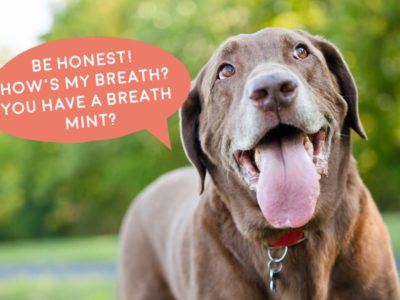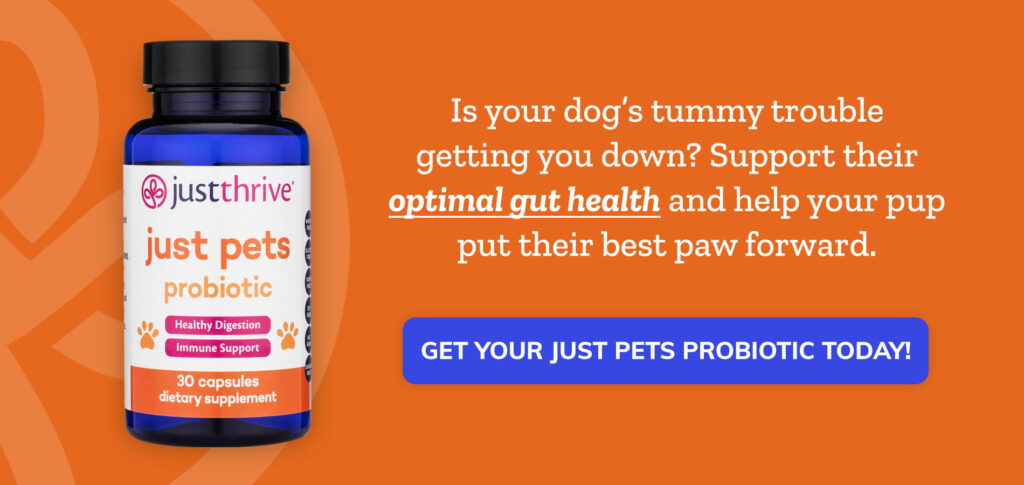Humans tend to view their canine buddies – no matter how much they love them – as… well… a littler dirtier than they are, a little stinkier.
They get that “dog smell” and it’s time to head for the groomer’s or backyard for bath time.
Only… a smelly dog isn’t always a normal thing. In fact, a healthy, vibrant dog eating quality whole foods really shouldn’t have much of a foul odor – unless, of course, he decided his afternoon would be best spent rolling around in some dirt and fresh dog pooh he was completely captivated by.
If you notice an unpleasant smell coming from your dog, don’t ignore it. It’s telling you that his body is off in some way and he may need your help to move it back into optimal health. Here are some areas of your dog that may develop an odor and what you can do about it.
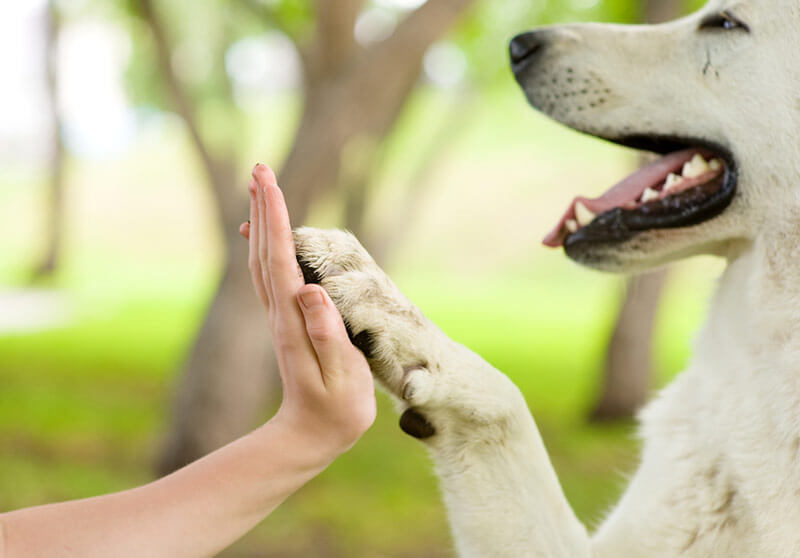
Skin and Paws
If you’re sitting around watching TV with your dog at your feet and you suddenly smell something like corn chips, but you’re not actually eating corn chips, you might be smelling a yeast problem on your dog. Yeast, which will also make your dog very itchy, is a problem that can develop when there is an imbalance in your dog’s immune system. There can be many factors involved in this imbalance – everything from breeding practices perpetuating genetic conditions to overvaccination and overuse of antibiotics and other immunosuppressing drugs like steroids – so in addition to dealing with the yeast, it’s more than likely that there is an underlying condition you’ll also have to figure out and treat. Find a holistic veterinarian experienced in chronic conditions and yeast issues to help.
In the meantime, there are a few things you can do to help fight the yeast battle. First of all, you’ll want to take a close look at your dog’s diet and eliminate sugar (sugar feeds yeast!) – that includes obvious culprits like honey or molasses in dog treats, but also carbs and starches like grains, white and sweet potato, and high-glycemic fruits and vegetables. Fortunately, dogs tend to thrive on low-carb diets and should be just fine on a home-cooked or raw higher protein diet. Do your research and work with your holistic vet as you construct the appropriate diet plan.
Topically, try using natural antifungal shampoos using tea tree and other anti-yeast herbs, as well as apple cider vinegar. You can create a 50/50 solution of ACV and water, and apply with a spray bottle on itchy spots (but avoid raw, open wounds because it will sting). Use the solution to clean his paws after walks – yeast loves to grow in damp, hidden areas like the bottoms of the paws.
There are other conditions that may create a foul smell on your dog, one of which is hypothyroidism. An underactive thyroid can create a multitude of symptoms in dogs, including itchy skin, hair loss, foul odor, shivering from cold, chronic ear infections and even mood disorders like aggression. If you have any of these symptoms or another symptom you can’t explain, have your dog’s thyroid levels checked, preferably through Hemopet, which specializes in thyroid diagnostics.
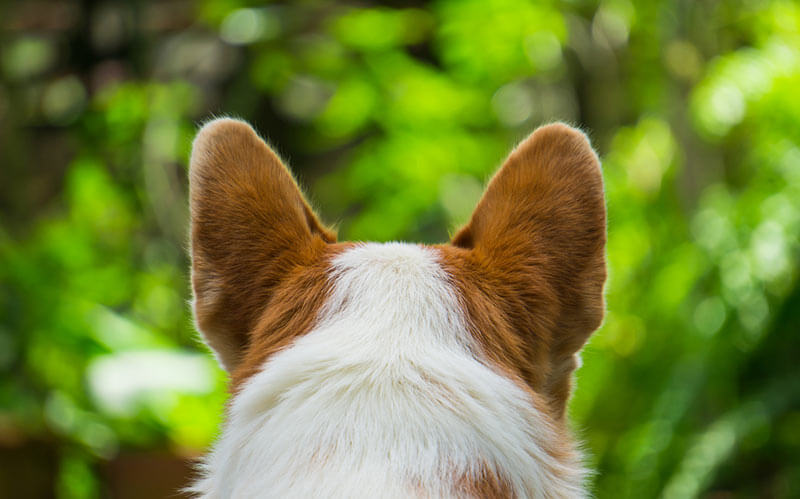
Ears
Along the same lines, smelly ears are often a sign of infection from bacteria and yeast; and chronic ear infections may be a sign of a chronic condition like hypothyroidism or allergies, in which case you definitely need to deal with the underlying issue. However, those floppy-eared dogs like Labs can also have their share of yeasty ears because there is not enough air circulating in the ears, which may help retain more moisture, especially if the dog gets wet. Regardless of the underlying cause, you can help your dog with an anti-yeast diet and by keeping his ears clean. Check his ears daily and if they have debris and gunk, clean them out using witch hazel and cotton balls. Only clean the parts of the ears you can see. If you purchase a cleaning solution, look for natural ingredients like calendula, comfrey, mullein, colloidal silver and oregano oil.
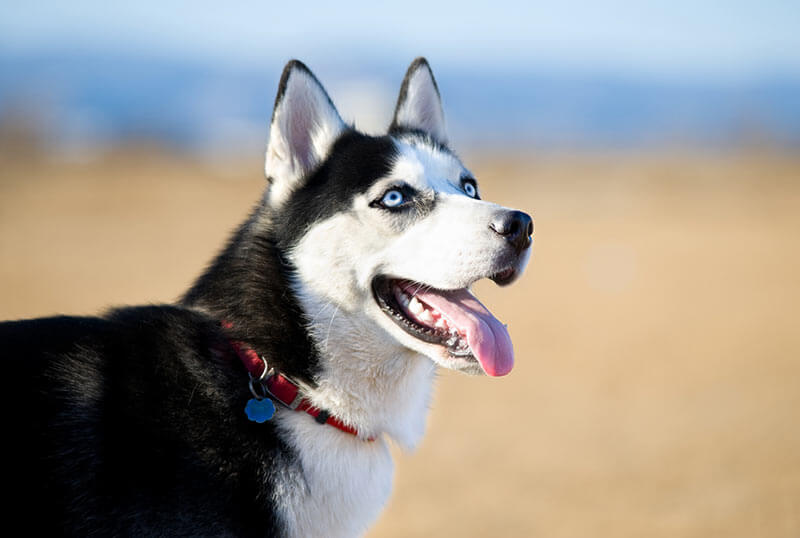
Mouth
This might be hard to believe, but a dog shouldn’t have bad breath. While it might not smell like peppermint and sunshine, it shouldn’t smell bad. If it does, it means his teeth need to be brushed with a natural doggie toothpaste or he could use a dietary change. Pet parents of raw fed dogs often report very clean teeth and stellar breath. Bad breath could also be sign of a gastrointestinal problem, so look out for other signs of distress, including excess gas and diarrhea.
Stools
Speaking of stools, here’s another area – though technically not on your dog’s body (hopefully!) – that shouldn’t smell as bad as you think. Large, soft, foul-smelling pooh is actually a sign your dog isn’t absorbing a lot of his food – which is what’s often happening in dogs fed commercial kibble. Stools of raw fed dogs are typically small, firm and less smelly.
Anal Glands
Since we’re already in this general area, we should mention the anal glands, which are located under your dog’s tail and secrete a pheromone substance that is part of territory marking. When these glands build up with this substance, they can become inflamed and irritated, causing your dog to scoot on his rear or lick the area constantly, and also causing a fishy smell. If a dog’s stool is firm, the passing of the firm stool will usually be enough to naturally express the substance. So once again, we circle back around to the importance of diet.
Other Sources:
http://www.dogsnaturallymagazine.com/the-poop-on-dog-diet-digestion/
http://healthypets.mercola.com/sites/healthypets/archive/2012/08/01/healthy-dog-vs-smelly-dog.aspx

